
Concept explainers
How many
a.  c.
c.  e.
e.  g.
g. 
b.  d.
d.  f.
f.  h.
h. 
(a)
Interpretation: The number of
Concept introduction: Spectroscopy method is used to identify the structure of the molecule. It is based on the interactions between matter and electromagnetic radiations.
Answer to Problem 14.48P
The number of
Explanation of Solution
In
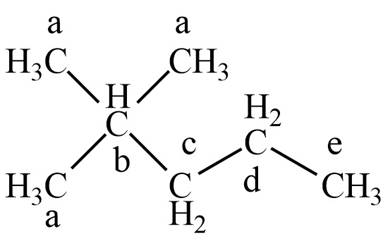
Figure 1
The number of
(b)
Interpretation: The number of
Concept introduction: Spectroscopy method is used to identify the structure of the molecule. It is based on the interactions between matter and electromagnetic radiations.
Answer to Problem 14.48P
The number of
Explanation of Solution
In
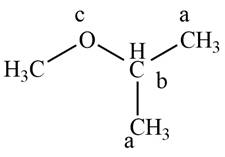
Figure 2
The number of
(c)
Interpretation: The number of
Concept introduction: Spectroscopy method is used to identify the structure of the molecule. It is based on the interactions between matter and electromagnetic radiations.
Answer to Problem 14.48P
The number of
Explanation of Solution
In
The number of
(d)
Interpretation: The number of
Concept introduction: Spectroscopy method is used to identify the structure of the molecule. It is based on the interactions between matter and electromagnetic radiations.
Answer to Problem 14.48P
The number of
Explanation of Solution
In
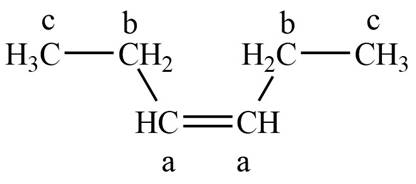
Figure 3
The number of
(e)
Interpretation: The number of
Concept introduction: Spectroscopy method is used to identify the structure of the molecule. It is based on the interactions between matter and electromagnetic radiations.
Answer to Problem 14.48P
The number of
Explanation of Solution
In
The number of
(f)
Interpretation: The number of
Concept introduction: Spectroscopy method is used to identify the structure of the molecule. It is based on the interactions between matter and electromagnetic radiations.
Answer to Problem 14.48P
The number of
Explanation of Solution
In
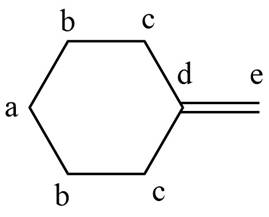
Figure 4
The number of
(g)
Interpretation: The number of
Concept introduction: Spectroscopy method is used to identify the structure of the molecule. It is based on the interactions between matter and electromagnetic radiations.
Answer to Problem 14.48P
The number of
Explanation of Solution
In
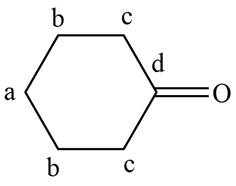
Figure 5
The number of
(h)
Interpretation: The number of
Concept introduction: Spectroscopy method is used to identify the structure of the molecule. It is based on the interactions between matter and electromagnetic radiations.
Answer to Problem 14.48P
The number of
Explanation of Solution
In
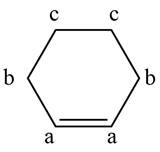
Figure 6
The number of
Want to see more full solutions like this?
Chapter 14 Solutions
ORG.CHEMISTRY W/ACCESS+MODEL KIT PKG
Additional Science Textbook Solutions
Chemistry & Chemical Reactivity
Chemistry: Structure and Properties (2nd Edition)
General Chemistry: Principles and Modern Applications (11th Edition)
Basic Chemistry (5th Edition)
- Consider geraniol, the principal constituent of rose oil.a.How many 1H NMR signals does geraniol exhibit? b.How many 13C NMR signals does geraniol exhibit? c.Into how many peaks will the protons on each C=C be split?arrow_forwardConsider geraniol, the principal constituent of rose oil. a.) How many 1H NMR signals does geraniol exhibit? b.) How many 13C NMR signals does geraniol exhibit?c.) Into how many peaks will the protons on each C=C be split?arrow_forwardIR.HNMR.C.NMR what the?arrow_forward
- Answer the following questions for each compound: a. How many signals are in its 13C NMR spectrum? b. Which signal is at the lowest frequency?arrow_forwardAnswer the following questions for each compound:a. How many signals are in its 13C NMR spectrum?arrow_forwardprovide number of NMR signalsarrow_forward
- An alcohol proton is deshielded as compared to a(n) __________ proton on an NMR spectrum. carboxylic acid aldehyde aromatic alkylarrow_forwardExplain why the carbonyl carbon of an aldehyde or ketone absorbs farther downfield than the carbonyl carbon of an ester in a 13C NMR spectrum.arrow_forwardGive a detailed explanation on how an NMR spectra is interpreted.arrow_forward
 ChemistryChemistryISBN:9781305957404Author:Steven S. Zumdahl, Susan A. Zumdahl, Donald J. DeCostePublisher:Cengage Learning
ChemistryChemistryISBN:9781305957404Author:Steven S. Zumdahl, Susan A. Zumdahl, Donald J. DeCostePublisher:Cengage Learning ChemistryChemistryISBN:9781259911156Author:Raymond Chang Dr., Jason Overby ProfessorPublisher:McGraw-Hill Education
ChemistryChemistryISBN:9781259911156Author:Raymond Chang Dr., Jason Overby ProfessorPublisher:McGraw-Hill Education Principles of Instrumental AnalysisChemistryISBN:9781305577213Author:Douglas A. Skoog, F. James Holler, Stanley R. CrouchPublisher:Cengage Learning
Principles of Instrumental AnalysisChemistryISBN:9781305577213Author:Douglas A. Skoog, F. James Holler, Stanley R. CrouchPublisher:Cengage Learning Organic ChemistryChemistryISBN:9780078021558Author:Janice Gorzynski Smith Dr.Publisher:McGraw-Hill Education
Organic ChemistryChemistryISBN:9780078021558Author:Janice Gorzynski Smith Dr.Publisher:McGraw-Hill Education Chemistry: Principles and ReactionsChemistryISBN:9781305079373Author:William L. Masterton, Cecile N. HurleyPublisher:Cengage Learning
Chemistry: Principles and ReactionsChemistryISBN:9781305079373Author:William L. Masterton, Cecile N. HurleyPublisher:Cengage Learning Elementary Principles of Chemical Processes, Bind...ChemistryISBN:9781118431221Author:Richard M. Felder, Ronald W. Rousseau, Lisa G. BullardPublisher:WILEY
Elementary Principles of Chemical Processes, Bind...ChemistryISBN:9781118431221Author:Richard M. Felder, Ronald W. Rousseau, Lisa G. BullardPublisher:WILEY





